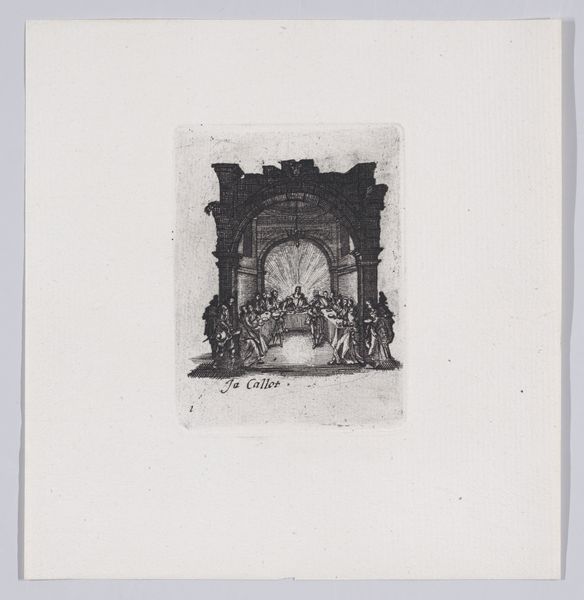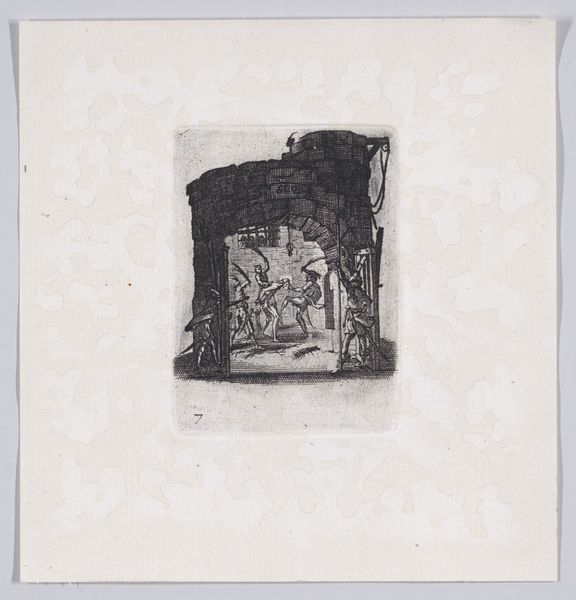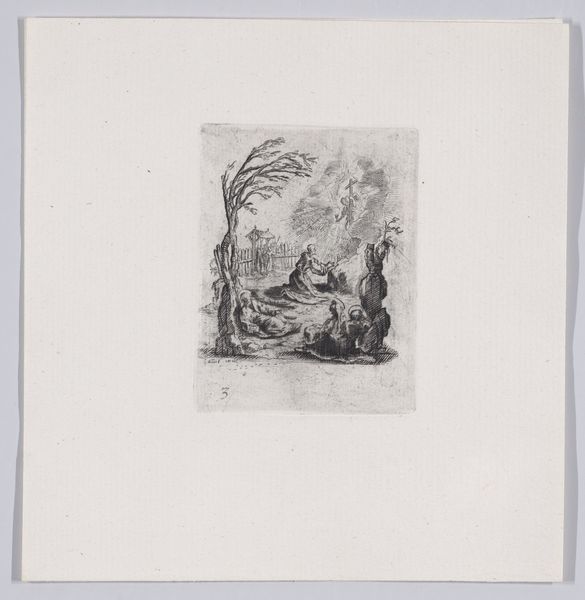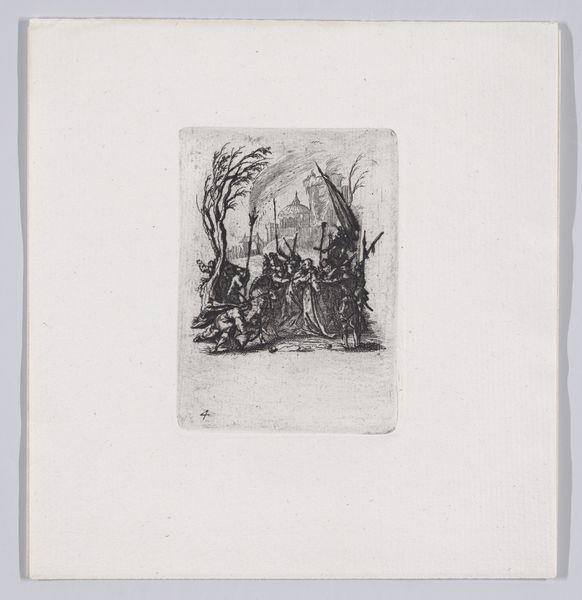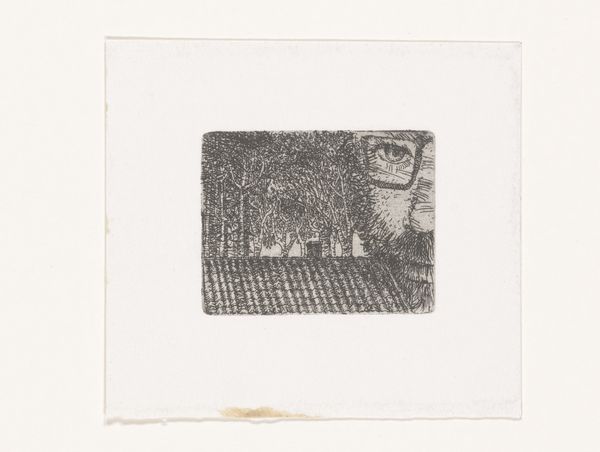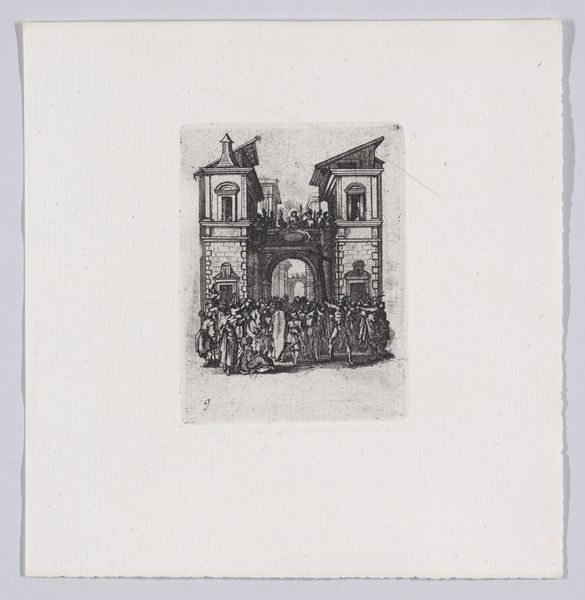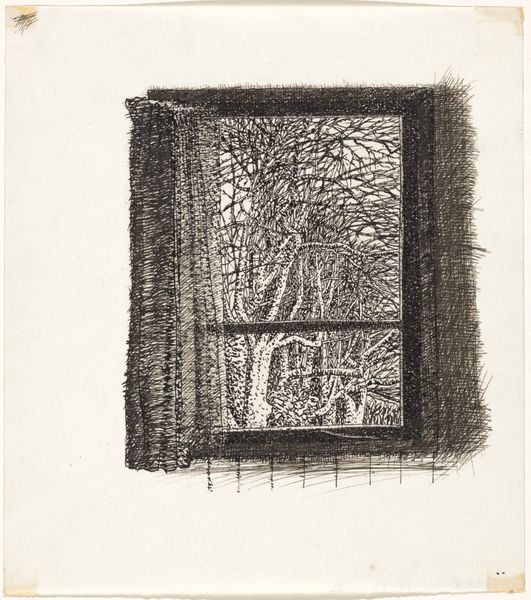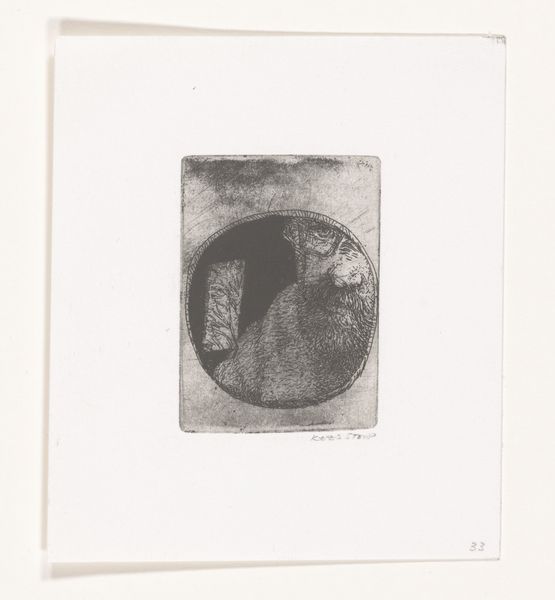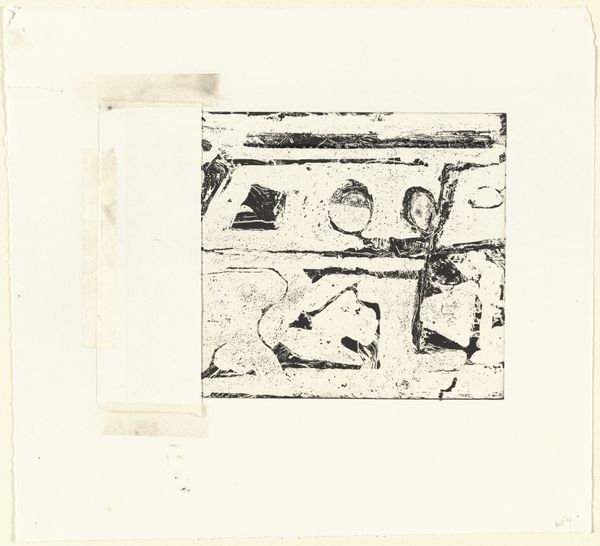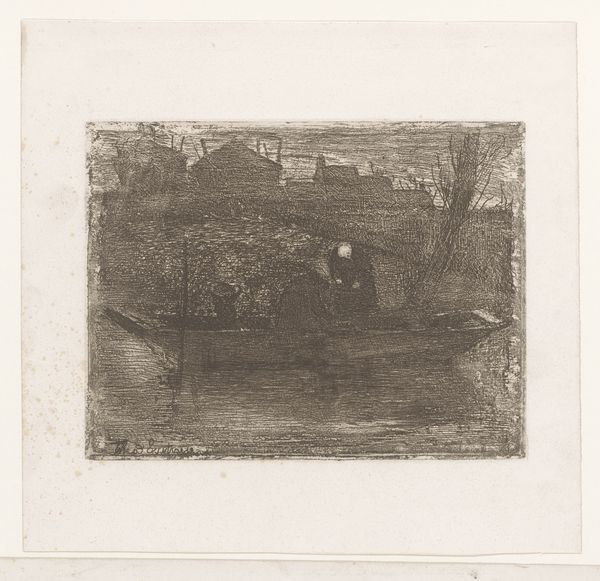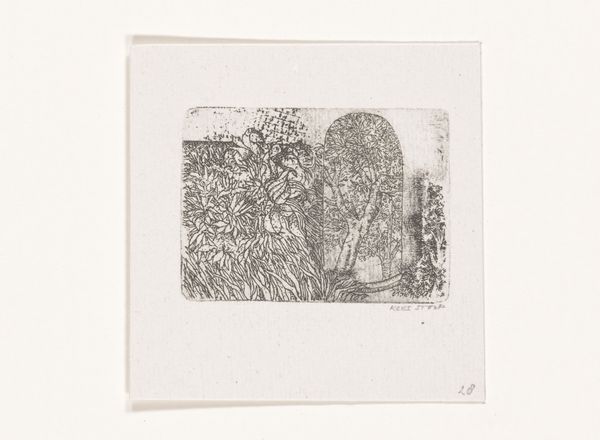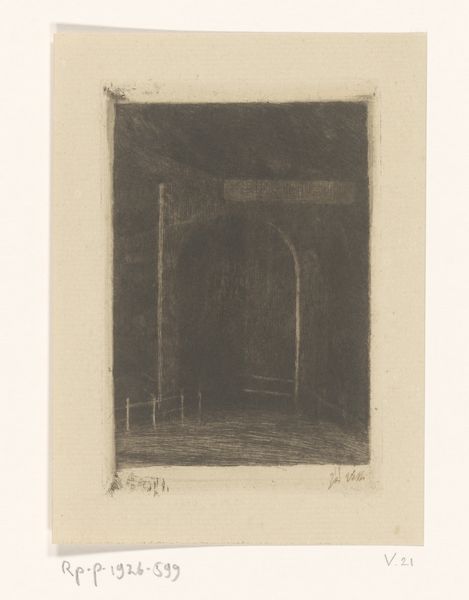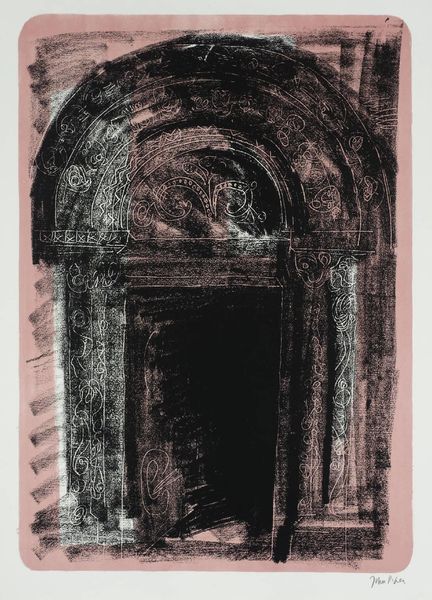
Reverse Copy of Le Couronnement d'Épines (The Crowning with Thornes), from La Petite Passion (The Little Passion) 1624 - 1700
0:00
0:00
drawing, print, etching, intaglio
#
drawing
#
narrative-art
#
baroque
# print
#
etching
#
intaglio
#
figuration
#
history-painting
Dimensions: Sheet: 5 1/2 x 5 3/16 in. (14 x 13.2 cm) Plate: 2 15/16 x 2 3/16 in. (7.5 x 5.5 cm)
Copyright: Public Domain
Curator: This intaglio print, likely dating from 1624 to 1700, depicts "The Crowning with Thorns." It's currently held at the Metropolitan Museum of Art. The artist, unfortunately, remains anonymous. Editor: The first thing that strikes me is how claustrophobic it feels. The thick lines of the architectural setting really confine the space. You can almost feel the crowd pressing in on this central scene. Curator: Absolutely. Notice how the architectural elements – the archway, the shadowed doorways – create a sense of theatre. The composition directs our eyes to the figure being crowned, placing that symbolic act within the continuum of early Passion narratives. Editor: But look at the crude mark-making; it undermines the potential for the tragic and emphasizes a different register. The etching doesn’t show refined tonal transitions – rather, quick, cheap reproducible images circulated the popular market. This might affect its function or intended viewer! Curator: While its status as a reproductive print speaks to that access, doesn't the very subject—the Passion—retain profound symbolic weight? The thorns, the jeering figures – they represent humiliation, sacrifice, but also ultimately, resurrection. And by depicting that narrative moment in countless visual forms, like the printing press has made possible, its cultural memory persists. Editor: Fair enough. Though, to see it from my perspective: this isn’t merely the timeless agony of a god figure; it’s also an early modern artifact, circulated via very tangible networks of workshops and commercial exchange, printed on a material substrate… Let’s keep our minds on where its importance actually arises: from human actions that make a visual impression through carefully learned technical methods. Curator: So, from symbolic meaning to physical making. Thank you for sharing your perspective. Editor: And thank you for the reminder that art’s physical reality shapes its symbolic charge.
Comments
No comments
Be the first to comment and join the conversation on the ultimate creative platform.
